#celtic holiday
Text
Lughnasadh
Learn about the holiday of Lughnasadh and how you can celebrate!

Photo Credit: Polina Rytova
What is Lughnasadh?
Pronounced LOO-nah-sah, Lughnasadh is an old Gaelic festival named after the god Lugh. The name “Lughnasadh” is Old Irish for (roughly) “The Gathering of Lugh”.
Also called Lúnasa (modern Irish), Lùnastal (Scottish Gaelic), and Luanistyn (Manx Gaelic).
Lughnasadh starts at sunset on July 31st and ends the night of August 1st, being halfway between the Summer Solstice and the Autumn Equinox; the holiday is one of four known Seasonal Festivals of the Gaelic-speaking people, the others include Beltane, Samhain, and Imbolc.
Note: The Holiday is held on January 31st – February 1st in the Southern Hemisphere!
Who is Lugh?
Lugh has many epithets, including (but not limitied to) Lugh Lámfada “of the long arm”, Ildánach ”the Skilled God” , and Macnia “the Youthful Warrior”.
He is the god of many skills, art, and justice. Though he also had a trickster side.
Lugh is also linked to lightning and the sun due to the etymology of his name; Lugh has been suggested to translate as “light” and one of his many epithets is “The Shining One”.
Feel free to read more about Lugh in this Deity Guide I wrote for him or look at the references and further reading section below!
History, Lore and Traditions
The Holiday may be named after Lugh, but one of the more popular myths around Lughnasadh is that Lugh had created it in honor of his foster mother, Tailtiu, who died of exhaustion after readying the fields for agriculture.
Competitive games, particularly the Tailteann Games or Áenach Tailten (modern spelling: Aonach Tailteann) were held during this time.
Feasts were had, as the holiday originated in legend as a funeral feast for Tailtiu.
Holy wells were visited during Lughnasadh, much like the other Celtic holidays. People would pray and offer coins (or clooties) while walking around the well clockwise.
As Lugh is also the god of oath-keeping and justice, contracts were signed and diplomatic meetings were held during Lughnasadh.
Matchmaking and hand-fastings were held on Lughnasadh. Specifically trial marriages were started on this day, with a trial period of a year and a day; you could finalize it after the year’s end or end the marriage.
Bonfires were sometimes lit but were not necessarily a huge part of this particular holiday.
Traditionally for Lughnasadh, folks would take the first corn of the harvest and climb to the top of a hill or otherwise high location to bury it as an offering.
A sacred bull would also be sacrificed sometimes, and the meat of the bull would be a part of the feast. The bull would then be replaced by a new, younger bull for the next year’s festival.
The exact traditions of the holiday would vary based on the culture, location, and even family of those celebrating it.
A Note on Lammas
Often conflated, Lammas, the two holidays share many similarities but are different in origin and history. Lughnasadh is Gaelic and Pagan whereas Lammas is Anglo-Saxon and Christian.
In the References and Further Reading section below you can read a great blog post about it titled “A Little History of Lammas” in which the author puts it perfectly:
Conflating these two holidays:
"...is not just an oversimplification but also culturally tone-deaf; even if they have linked origins - and that's a big if - the Irish and English festivals have very different histories, and have to be understood within their different cultural contexts.”
Modern Day Lughnasadh
Correspondences
Note: Any historic or traditional offerings will be marked with a (T). Your offerings do not have to be historic to be valid, this is just my way of categorizing!
Deities
Lugh is obviously the main deity for this holiday historically.
Other deities that honor harvests and agriculture and such could also be celebrated on this day. A few examples include:
Osiris
Demeter
Ceres
Freyr
Colors
Warm colors like orange, yellow, and gold.
Warm brown tones.
Earthy Green
Herbs and Plants
Corn (T)
Wheat (T)
Basil
Calendula
Chamomile
Echinacea
Fennel
Lemon balm
Marjoram
Nasturtium
Rosemary
Sage
Sunflowers
Sweet alyssum
Thyme
Yarrow
Stones/Metals/Crystals
Gold
Citrine
Tiger’s eye jasper
Ruby
Hematite
Spell work
Spells that deal with justice and fairness
Creating contracts with spirits or deities
Spells that deal with abundance
Prosperity spells
Offerings
Coins (T)
Corn (T)
Bilberries (T)
Blueberries
Pies (specifically bilberry or blueberry pies)(T)
Wine (T)
Cake (T)
Activities
Play Cornhole
Play athletic/competitive games
Bake a cake
Prepare a feast (T)
Take a walk and appreciate the coming change of the seasons
Research Lugh, his foster mother, and Celtic history
Climb a hill and bury an offering (T)
Set up or decorate your altar using items from the list above (or your own correspondences!)
These are only some offerings, correspondences, and activities that you could do for Lughnasadh. If you want to celebrate in a different way you certainly can!
Citations and Further Readings
Lughnasadh - New World Encyclopedia
Lugh - Mythopedia
A Little History of Lammas by A Clerk of Oxford
July Garden - Tenth Acre Farm (used for herbal references)
Lammas - Britannica
---
Edited for accuracy
256 notes
·
View notes
Text






Have a merry Imbolc!
Spring is coming and the cold days have their days counted so please show up now before it's too late because I'm tired of this unnatural heat at this time of year.
#imbolc#middle winter#winter sabbat#saint brigid#celtic holiday#midwinter#winter is still here#please tell me about your snowy days here is too dry#I love cold days#and this stupid change of wheater is spoiling it#imbolc is here
6 notes
·
View notes
Text
Deadly fall: Samhain
SAMHAIN
Category: Celtic religion
Samhain (also written Sauin, because its pronunciation is NOT like how it is written) is well-known today as the “ancestor” of Halloween – but people tend to forget that it was an ancient celebration of its own right, not just an “old name for Halloween”.
Samhain was a Celtic festival celebrated by the Gaels, the people who inhabited Ireland, Scotland and the Isle of Man (though the celebration was also known to have reached other parts of the British Isles, such as Wales or Cornwall) – and while it clearly had its root and “glory age” during the pre-Christian times and early-Christian times, the “pagan” celebration still survived up to the 17th and 18th century, before being replaced by Halloween. The date of Samhain is the 1st of November, however the holiday proper begins on the night of October 31st: for the Celts, a day began at sunset, not as sunrise we are accustomed to today. Samhain was the “Gaelic New Year”, and also doubled as the holiday marking the transition between summer and winter. The Celts only saw the year divided into two seasons: a bright, hot season of life (summer), and a dark, cold season of death (winter). Samhain was the passage from the “clear” season to the “dark” season, and the very opposite of Beltaine/Beltane, on the 1st of May. With Samhain, all the “summer” activities would stop: peace was declared among the tribes, for war was an activity of the “bright” side of the year, and all the herds would leave the summer pastures to be kept indoors or in stables. It was the time when cattle was slaughtered to form food stocks for the winter, and when Irish royalty and nobility gathered to declare new laws or renew political decrees. Samhain was a time when people gathered together for great feasts: they ate a lot, drank a lot, and organized all sorts of athletic competitions. The merriments could sometimes spill over Samhain day proper – records talk of a full week of festivities, starting three days before Samhain and ending three days after.
Samhain was notably a time for lighting up bonfires on top of the hills, a tradition which mirrored and paralleled the one of Beltaine’s fires: these great pyres were representations of the Sun, manifestations of heat and light in front of the upcoming darkness of winter, and the flames were used to “cleanse” and “purify” the people and the land, by “burning up” all the evil and harmful things that could be left from the previous summer. In some regions, the youth had to get as close to the fire as they could without burning themselves and bask in the flames’ smoke; in others, two bonfires were built and the cattle had to walk between the pyres so that they might be immunized to diseases and disasters. It was a common habit to scatter the ashes of the great bonfires over the fields to protect them, and people also had the tradition of extinguishing the hearth of their homes to then light it up with burning branches taken out of the communal fire, manifesting the renewal of the year.
This seasonal and yearly change was one of the reasons Samhain was considered to be a “liminal” holiday – the other was the belief according to which, during Samhain, the “walls” between our world and the Otherworld “thinned down”. It was said that on Samhain, the doors of the Otherworld opened up, and the mounds of the land too opened-up: burial mounds and fairy hills that became portals and doorways to the Otherworld. Not only did it meant that the inhabitants of the Otherworld could walk freely among us, but it also meant that a careless wanderer could step into the Otherworld. Note that the Celtic Otherworld is special in that it is not just “a” supernatural realm, it is ALL the supernatural realms in one. It was the realm of the gods, where the Tuatha dé Danann went living after leaving our world ; it was “fairyland”, inhabited by nature spirits, mysterious witches and other monsters ; and it was the afterlife, from which ghosts and revenants could return. As a result Samhain was a time when both the fairies and the dead could visit. As a result, people used to do everything in their power to flatter, appease and put in a good mood the supernatural forces – at least, to get their help to survive the next winter. Druids appeased the gods through sacrifices thrown into the fire ; people left food and drinks outside their house for any member of the fair folk who would pass nearby, and families left an empty chair near the fireplace or during their meals in case the spirit of an ancestor wanted to say hello.
But Samhain wasn’t all about getting good things. It was also about avoiding the bad ones. Samhain was already a spooky day: while the honored dead returned with benevolent thoughts and great blessings, vengeful spirits came back with wicked intentions and a desire to punish… The fairy-folk itself was known for its mischievous and prankful nature, which often made them cruel or dangerous towards humans. As a result, people avoided leaving their home on Samhain, or travelling alone at night – if they had to, they did so wearing their clothes inside-out, or carrying salt and iron on their person, to protect themselves from the spells of the otherworld. In southern Ireland, there was even a tradition known as “parshell/parshall”: a parshell was a small cross made of sticks and straws hanged over a doorway to ward off witchcraft, sickness and bad luck. The parshall hanged on the house all year long, but had to be renewed every Samhain.
Samhain wasn’t just a thinning out of dimensions, but also of time: it was believed that on this day you could see into the future: it was THE big holiday of divination and fortune-telling. The traditional Halloween game of “bob the apple” even began as a Samhain divination game! Traditional rituals were many and varied. One had a group of people placing a circle of stones around a bonfire at night (one stone by person), before running around them with a torch in hand – if in the morning, a stone was mislaid, its “owner” would not be alive by next Samhain. Another rite had people peel an apple in one long strip before tossing it over one’s shoulder: the fallen peel would form the first letter of your future spouse’s name. A third game had a person pick two hazelnuts, one for themselves and one for the person they loved, before roasting them together: if they jumped away from the fire, it meant this relationship will never work, but if the two nuts roasted peacefully it meant the two people were meant to be together. In general, most Samhain divination rites were about either marriage or death, and used apples and hazelnuts: in Celtic symbols, apples were for immortality and hazelnuts for divine wisdom, plus apples were also recognized as the “fruits of the Otherworld”. Exception to this is a divination rite using the white of eggs being thrown into water: it was supposed to form the number of children you’ll have in the future. There was even a tradition of baking a cake with little items in it, then serving portions to your guests: the item in the slice you had would determine your future (if you got a ring, it mean you will marry in the next year, if you got a coin it means you’ll be rich, etc…)
And one of the reasons Samhain is seen as a “proto-Halloween” is due to its “modern” habit of “guising and mumming”. I use “modern” because this tradition was first recorded in 16th century Scotland, so it is the “modern” time of the ancient Celtic festival: people, putting on costumes and disguises, would go door-to-door asking for food. It is believed that this was a modernization of an older tradition in which people disguised themselves as the denizens of the Otherworld to receive the food and drink offerings on their behalf. In Scotland this proto-trick-or-treat was done by young men, who put masks or veils on their faces, when they didn’t blacken it (probably with the ash of the bonfires) before knocking on doors and threatening to do mischief if they were not welcome (clearly here playing the role of the “people of the mounds”) ; in the Ireland of the 18th century, it was rather peasants who did this ritual, using sticks to knock on doors before asking for food – a notably phrase used in these times was “Lay aside the fatted calf, and bring forth the black sheep!”. In southern Ireland, in the 19th century, there was even a tradition called the “White Mare”, Lair Bhan. A man dressed as the “white mare” by covering himself in a white sheet and holding a horse skull: he lead a group of youths who announced their arrival by blowing into cow horns – they went from farm to farm, and each farmer gave them food – because giving them food meant bringing good fortune, while refusing them was bringing misfortune on one’s farm.
- - - - - - - -
Samhain was notably VERY important when it came to Irish mythology: as one of the two biggest celebrations of the Celtic year (or one of the four if you count Imbolc and Lughnasad), a lot of stories depicted the strange and bizarre events that, according to legends, happened on this “night of mischief”.
# A story of Fionn mac Cumhaill tells of how the hero defeated Aillen, “the burner”, a mysterious entity coming from the Celtic underworld every Samhain: every year, he would all the inhabitants of a palace he kept targeting to sleep thanks to beautiful songs played on his harp, before burning the palace with his fiery breath. Fionn later defeated another being of the Otherworld, Culdubh, who came out every Samhain of a burial mound in Slievenamon to steal a roasted pig – Fionn killed him with a spear as the creature returned into the burial mound to the other world, but as he threw the spear through the closing door of the mound, Fionn’s thumb got caught in the door – when he got it out, Fionn put the thumb to his mouth to ease the pain, but since his thumb had been into the Otherworld through the door it was imbued with magic, and when Fionn sucked it, he gained a great wisdom.
# A story told of how every Samhain a trio of female werewolves came out of the cave of Cruachan to kill a community’s livestock: they were defeated when the hero Cas Corach used his musical talents to lure them into becoming human again, leaving the warriors of the tribe to kill them in their defenseless forms.
# Several tales recall of how a king received warnings of his impending doom by messengers of death (usually undead horsemen) for breaking a solemn oath or committing a crime ; only for the king to ignore this and then die on Samhain of a “threefold death”, in three steps: by being wounded, by being burned and by being drowned.
# A poem told of how in the fairy mound of Bri Eile lived a beautiful maiden that the men of Ireland tried to woo each Samhain – only for these attempts to always end in death.
# The story of the “Adventures of Nera” tell of how a king organized a test of bravery on Samhain night: his warriors had to, one by one, go to the gallows nearby and tie a wicker band around the ankle of the hanged corpse dangling there. All failed, as they were terrified by monstrous apparitions on their way to the gallows ; when it was Nera’s turn, he succeeded tying the band, but the corpse suddenly came to life and asked for a drink. Nera, being a friendly fellow, carried the talking corpse with him: they approached a house, only for a wall of fire to appear. They went to a second house, only for water to surround it. They could only reach the third, in which the corpse was given a drink – but after drinking three cups, the corpse spat back his drink at the house-owner’s face, killing him. Nera decided than to put back the corpse on the gallows and return to the castle. But what his surprise upon seeing the castle in flame, with all its inhabitants decapitated: seeing an army leaving the ruins, he follows them inside a hill in which they enter. There, a beautiful lady reveals to him that they are a fairy-army, and that what he saw was just a vision of the future – of what would happen next Samhain, unless the human warriors agreed to fight the army of the hill and managed to defeat the fairy people. Nera left the hill and returned to the palace, only to see it normal again, with everyone inside: apparently no time had passed since he had left to reach the gallows. The war then happened, and the human destroyed the hill, saving their life in the process.
# We also have Christian texts talking about human sacrifices during Samhain. We know today that either those tales were completely invented to denounce the “pagan practices”, either they were twisted and distorted records of actual events, but according to the Christian monks of Ireland, on Samhain was held the worship of a god called “Crom Cruach” whose statue could be found on Magh Slecht, a “wizened god hidden by mists” who was sacrificed a first-born child in order to ensure a good year for milk and grain : his cult was supposedly ended by the arrival and actions of Saint Patrick who Christianized Ireland.
57 notes
·
View notes
Text

#celtics#free palestine#gaza#free gaza#west bank#ceasefire now#jerusalem#usa news#us politics#social justice#christmas#happy holidays#percy jackson#ao3
589 notes
·
View notes
Text

All About Imbolc
Imbolc, also known as Imbolg, celebrated on February 1st, marks the halfway point between the winter solstice and the spring equinox in early Ireland and Scotland, and also signified the beginning of the first signs of spring after all the harsh winter days. Originally a pagan holdiay in pre-Christian times, there is little in writing about the historic traditions and customs, although many historians believe it revolved around the Celtic Goddess Brigid, lambing season, and cleansing due to observed ancient poetry.
Brigid is a Goddess and daughter of the father-God of Ireland, Dagda. She is associated with quite a few things depending on the sources, but universally associated with wisdom and poetry. Other associations of hers are blacksmithing, protection, domesticated animals, childbirth, fire, and healing. She was also known as a protector of the home and the family.
Once Christianity arose, it is believed that the Goddess was syncretized with the Irish Saint Brigid by Christian monks due to the many overlapping associations. This caused Imbolc to quickly turn into St. Brigids Day and the next day into Candlemas with the rising Christian popularity, enmeshing the holiday associations together.
Today, many people have mixed the traditions and melded many associations from both religious and cultural history to celebrate their own unique way. Common ways to celebrate are making a Brigid's Cross, welcoming Brigid into the home, having a feast in her honor, cleaning the home and oneself, visiting a holy well, and in some parts of the world they still hold festivals and processions carrying a representation of Brigid. Many pagans nowadays are using associations of hers and their connection with nature to create their own ways to celebrate, however, and you can absolutely celebrate however you feel called to do so.
Imbolc Associations:
Colors - white, gold or yellow, green, and blue
Food - milk, butter, cheese, seeds and grains, breads, herbs, blackberries, oat porridge, wild onion and garlic, honey
Animals - sheep and lambs, swans, cows, burrowing and hibernating animals
Items - candles, corn dolls, Brigid's cross, fires, snowdrops and white flowers, crocuses and daffodils, flower crowns
Crystals - amethyst, garnet, ruby, quartz, bloodstone
Other - lactation, birth, feasting, farm preparation, cleansing and cleaning, the sun, poetry and creative endevours, smithing, water
Ways To Celebrate Imbolc:
make a Brigid's cross
light candles
have a feast
bake bread
plan your spring garden
leave an offering for Brigid
make a corn doll
craft a flower crown
clean your home
take a cleansing bath
make something out of metal
have a bonfire
look for the first signs of spring
make your own butter or cheese
do divination work and seek wisdom
write a poem
#magical#magic#magick#witch#witchy#pagan#paganism#witchblr#imbolc#imbolg#brigid#st brigid#candlemas#holiday#baby witch#witch tips#sabbat#wheel of the year#wiccan#celtic#gaelic#history#brigit#beginner witch#witchcraft#witchcore#cottage witch#hedge witch#green witch#eclectic witch
396 notes
·
View notes
Text










Timothée Chalamet and his father Marc Chalamet at the Los Angeles Lakers vs. the Boston Celtics on December 25, 2023 in LA. ✨
📸 by Allen Berezovsky
#timothee chalamet#timothée chalamet#Marc Chalamet#lakers#Celtics#December 25#merry christmas#Christmas#Allen Berezovsky#happy holidays
270 notes
·
View notes
Text


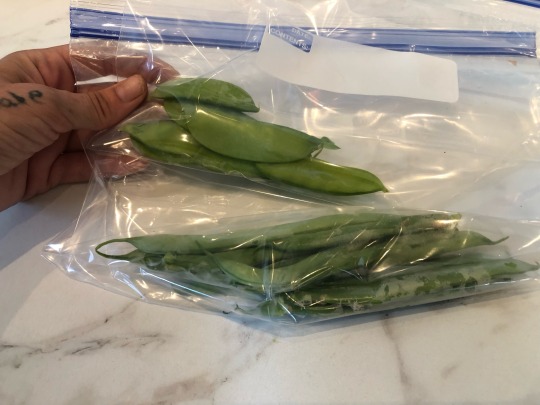
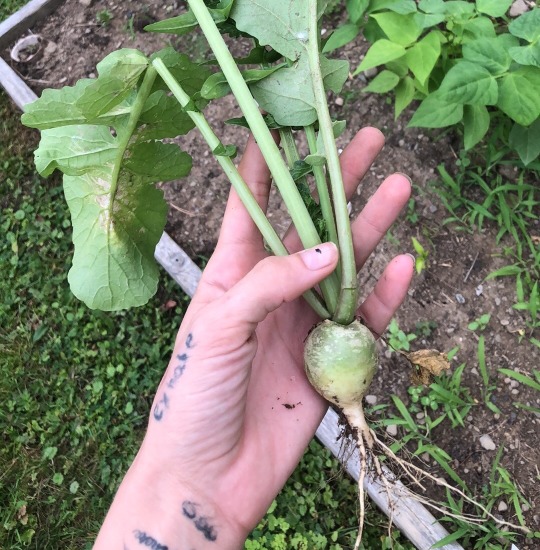
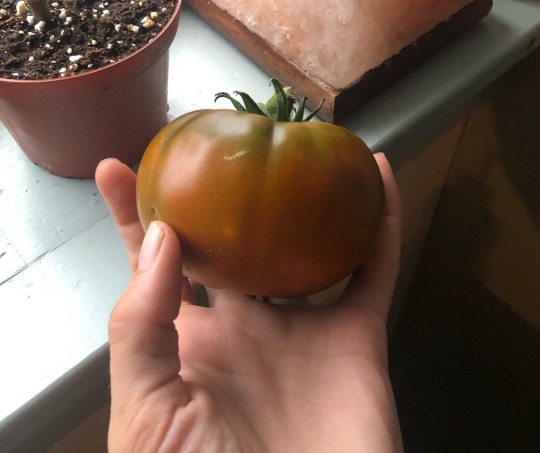


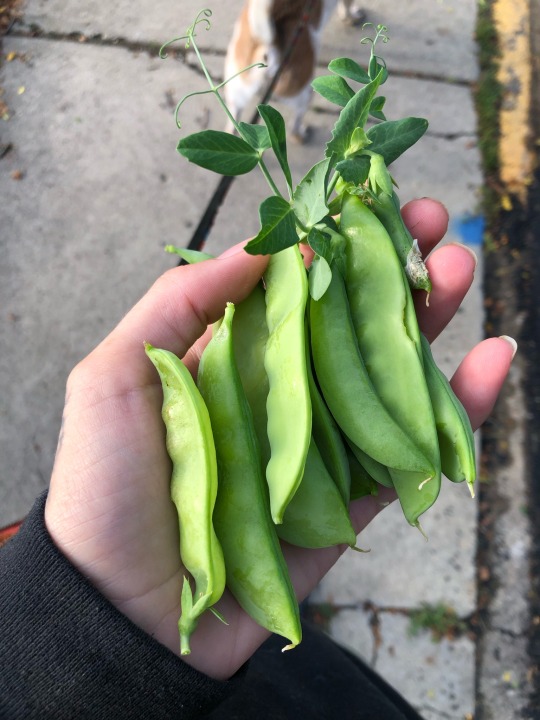
I’m very excited and grateful for the things I’ve been able to harvest this year so far 💚🥒 tomorrow I’ll be going down to the community garden and doing some weeding and harvesting, making some honey corn bread and processing some herbs I harvested as well.
#lughnasadh#Lammas#harvest#garden#gardencore#urban gardening#community gardening#container gardening#food forest#nature#pagan#holiday#celebration#paganism#Celtic paganism#eclectic#irish history#greenery#plants#gardener#love#food is free#community#direct action
131 notes
·
View notes
Text
blessed ostara!!

i hope all my fellow witches and pagans have a wonderful equinox! yes i know my alter is messy but incense dust and candle wax is really hard to clean up and ive had a very busy week
#witch#witchcraft#celtic paganism#paganism#pagan#pagan holidays#pagan witch#ostara#equinox#spring equinox#irish holiday#irish#celtic#celtic holidays
24 notes
·
View notes
Text
Blessed Samhain to all my amazing witches. 🍄🕷🦇💀🧙🏻♂️🎃

And a blessed Beltane to my witches in the southern hemisphere.
#samhain#pagan festival#pagan holidays#wheel of the year#witchblr#witch community#witches of tumblr#witchcraft#witchythings#witchy celebration#irish paganism#celtic paganism#beltane#blessed samhain#blessed beltane
216 notes
·
View notes
Text
I'm doing a lunar ritual tonight and then on Samhain my family (who doesn't practice) and I are going to make a big dinner of beef stew, molasses bread, mulled apple cider, and soul cakes.
My family is very celtic and to start traditions like this means the world to me. We already do some Irish things that we've done since my great grandma came from Ireland (like my mom's shepards pie recipe handed down from my grandma or black eyed peas eaten on new years)
After the food festivities I plan on doing tarot with my sister or working on developing my claircognizance.
With all that being said I hope some of these things inspires you to pre-plan for Samhain too! Merry Samhain and Happy Halloween!
#witchcraft#witch community#witchblr#witchcore#witch business#samhain#samhain celebration#celtic#Celtic holidays#celtic ancestry#pagan stuff#pagan prayer#pagan witch#paganism#paganblr#celtic paganism#irish#irish heritage
24 notes
·
View notes
Text
Samhain
Crisp air like a freshly picked apple and leaves the colors of sunset indicating the ending of a season; here comes Autumn and with it a very popular pagan holiday: Samhain!
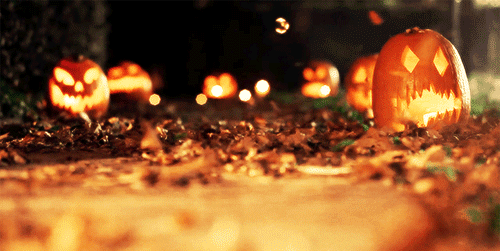
This is a remake of my original Samhain post. This one is going to be a long one so buckle up!~
While us those in the northern hemisphere are celebrating Samhain, our friends in the southern hemisphere will be celebrating Beltane!
Historical Samhain
The name “Samhain” (pronounced Sah-when) comes from the Old Irish samain which literally means “Summer’s end” as it was created using Old Irish sam ”Summer” and fuin ”end” (etymonline.com).
By now I’m sure you’ve guessed Samhain’s origin, it’s a Celtic* festival, one of four major holidays.
**In this post when I refer to “Celts” or “Celtic people” I am referring only to the Insular Celts, more specifically the Gaelic-speaking Celts. To learn the difference between Celtic and Gaelic please read this article
For these Celts, Samhain was the beginning of the new year. Due to the oral nature of the culture, not much is known about the traditions of Samhain, though we have some documentation from other cultures as well as some ideas from historians as to what they may have done.
Traditions
The traditions of Samhain may vary by group or even by family, but one common tradition was to have a large, public sacred bonfire. (Fun fact, the term “Bonfire” comes from the English “bonefire” meaning literally “a fire of bones”). During these bonfires, the Celts would sacrifice livestock and crops as offerings to their deities.
Households would extinguish their hearth fires earlier that day and would take the flame from the public bonfire to reignite their hearths. This was likely to represent renewal or new beginnings as they transitioned to the new year as well as a representation of community.
The veil between this world and other worlds is thought to be very thin on Samhain, making it easier not only for us to reach out to spirits, deities, and the like, but for them to reach out to us. These otherworldly beings are thought to be able to influence our world more powerfully during Samhain.
In some places, like Britanny, they believed that the dead would visit their living friends and relatives during this time.
In Welsh tradition, people would leave out food, leave doors unlocked, and prepare the house for the spirits of relatives that may come to visit.
Large turnips were hollowed out and would have faces carved into them and then place on window sills to ward off evil spirits.
In other places, like Scotland, Samhain was a time for mischief. Young men would dress up as spirits, donning masks, painting their faces, or wearing costumes.
Divination was very popular during this time, especially marriage divination. This wasn’t just done by druids but by the common folk as well.
In some places, it was considered taboo to forage for fruit or grain during and after Samhain, it was thought that the fae or spirits would have passed over and tainted them. There were even laws against doing so.
Notes
Samhain is the Irish name for the month of November.
Samhain is one of the four main holidays of the ancient Celts, the other three are Beltane, Lughnasadh, and Imbolc.
Pigs were the choice of sacrificial animal for Samhain.
Samhain was a sacred time that often welcomed assemblies and would be used to settle important business matters like the inauguration of new kings, debts being paid, and trials.
In Celtic mythology, the Second Battle of Mag Tuired begins on Samhain.
Trick-or-treating is a modern-day tradition but could have derived from the many different traditions of old.
The Cailleach is a seasonal goddess said to rule the “dark” side of the year (fall and winter) and would rule between Samhain and Beltane. Likewise, the goddess Brigid would rule the “light” side of the year between Beltane and Samhain.
While Wiccans may celebrate Samhain as part of their Wheel of the Year, it is not a Wiccan-specific holiday and has ties to much older traditions.
Modern Halloween is an amalgamation of Samhain and the Christian All Hallows’ Eve or All Saints’ Day and All Souls’ day. Halloween found its popularity after many Celts immigrated to North America.
Similar to these holidays is Día de los Muertos (Day of the Dead) which originated in Mexico. This holiday reunites the living and the dead, allowing the spirits of loved ones to cross back over to our world for a short period of time. Families will make altars and give offerings to those who have passed. Festivities and celebrations are held during this time. It is traditionally held on November 1st or 2nd but is celebrated on October 31st or November 6th depending on the location.
Modern Samhain
As long as you’re aware of and honor the history of Samhain and are being respectful you can celebrate this holiday however you choose!
Here is a list of correspondences and the like that I found throughout my research for Samhain, some have historical backing and others don’t. Take what speaks to you and leave what doesn’t.
Food
Mead, beer, and mulled wine
Meat
Bread, soul cakes, pies, and other such pastries.
Apples, squash, and potatoes.
Colcannon
Soul cakes
Barmbrack
Colors
Warm colors such as red, orange, brown, and yellow.
Black
Dark green
Rocks & Metals
Onyx
Obsidian
Citrine
Hematite
Carnelian
Smoky quartz
Tiger’s eye
Ruby
Copper
Jet
Plants
Rosemary
Thyme
Vervain
St. John’s Wort
Mugwort
Dragon’s blood
Saffron
Deities
The Morrigan
The Dagda
The Morrigan and The Dagda seem to be the main deities for Samhain as per Celtic mythology but you could also choose to honor any Celtic deity or even other deities on this day, especially those involving liminality and death such as:
Cerunnos
Diana
Anubis
Hecate
Heimdall
Here are more liminal deities and here are more death deities.
Magic & Spellwork
Spirit work: honoring or communicating with spirits
Banishing and cleansing (out with the old and in with the new!)
Honoring ancestors
Activities
Bonfire
Fest
Baking
Decorating or creating an altar for Samhain
Other Correspondences
Tarot: Death, The World
Death in the Tarot often means “the end of something with the promise of something new on the horizon”, and represents transition the perfect card for a holiday of similar sentiment.
The World tarot card indicates cycles, closure, and completion.
Zodiac: Scorpio
It’s Scorpio season!
Runes: Fehu, Eihwaz
Fehu can represent new beginnings.
Eihwaz represents transformation, out with the old and in with the new, which pairs well with the ancient Celtic new year.
Androgyny
In Samhain's past, it wasn’t uncommon for men to dress in traditionally women’s clothes and women to dress in traditionally men’s clothes. While the social idea of gender is shifting and we don’t gender clothes as often in some modern societies, we can still use this as a way of celebration. Androgyny is like the liminal version of gender, neither male nor female. So trans witches or gender non-conforming witches of all flavors: show yourself some extra love this coming Samhain holiday!
References and Further Reading
The Ancient Origins of Halloween - History.com
Samhain - Worldhistory.com
Halloween Customs in the Celtic World - by Bettina Arnold
Samhain - Wikipedia
Samhain - Flying the hedge
Secular Celebrations - Samhain - @breelandwalker
#samhain#witchcraft#witchy holidays#pagan holidays#halloween#spooky season#pagan#grimoire#witchblr#celtic paganism#celtic#celtic witchcraft
375 notes
·
View notes
Text

#MY TEAM!!!!!!#rb if True#celtics#boston celtics#jayson tatum#jaylen brown#jrue holiday#derrick white#kristaps porzingis#oshae brissett#al horford#payton pritchard#sam hauser#xavier tillman
11 notes
·
View notes
Text

#things I did not expect to experiemce this year: become obsessed with jrue holiday#and YET#I think he IS the prettiest guy out there#jrue holiday#celtics#nba#*
18 notes
·
View notes
Text
I wanna make a little mechs fic about Lyfrassir and Yule specifically as a... idk therapeutic or cathartic sorta fic? Not sure what term to use. This'll be my second year officially celebrating Yule instead of Christmas? The dramatics of which I'm much more likely to detail in ao3 notes than a Tumblr post (bc what's a better place than ao3 notes) but I'm very excited and wanna project a bunch of feelings and experiences onto the mech fandom's favorite barbie doll. I actually have a little scene between Lyf and Brian written already but I'm kinda out of ideas after that aside from the side-plot of Marius's mission based on Tim's explanation of mistletoe vs the reason Lyf actually has mistletoe. Not sure if anyone's interested in that or if I'll end up posting it but!! I'm ranting here anyway!! If you read this post and do wanna see me make a Yule fic, wanna toss some ideas my way perhaps? :)
#i think it would also be fun bc tam lin was an old Celtic ballad for samhain/halloween#which i actually tried doing to easy traditions for samhain (leaving out offerings of apples and what have you)#but anyway#samhain Lyfrassir fanfic#then yule Lyfrassir fanfic#what better way to celebrate old holidays/traditions than writing queer fanfics about immortal space pirates and their eldritch stowaway?#the mechanisms#the bifrost incident#lyfrassir edda
25 notes
·
View notes
Text
the cyclical holidays
sometimes the days of these holidays can change depending on the year but these are the traditional dates
alban arthuan - winter solstice
date: december 21st
associations: the sun, nwyfre (life force), white and gold, crowns, the new moon, midnight, Dagda and Hu
imbolc
alban eiler - spring equinox
date: february 1st
associations: the earth, calas (principle of matter), brown and black, a circle of candles, the first crescent moon, first light, Brighid and Ana
belteinne
date: march 21st
associations: saturn, element of earth, indigo and red, a dragon, the first quarter moon, dawn, Aengus and Coel
alban heriun - summer solstice
date: may 1st
associations: jupiter, the element of water, sky blue and orange, a mead horn, the waxing gibbous moon, morning, Eriu and Elen
lughnasadh
date: june 21st
associations: mars, the element of fire, red and yellow, three rays of light, the full moon, noon, Lugh and Beli
alban elued - autumn equinox
date: august 1st
associations: venus, the element of air, gold and green, a fiery wheel, the waning gibbous moon, afternoon, Tailtiu and Sul
samhuinn
date: september 22nd
associations: mercury, the element of spirit, green and blue, a silver branch, the last quarter moon, dusk, Mannanan and Esus
date: november 1st
associations: the moon, gwyar (principle of flow), violet and silver, a cauldron, the last crescent moon, evening, the Morrigan and Cerridwen
#pagan#paganism#polytheist#witchblr#magic#polytheism#witchcraft#witch#magick#celtic mythology#celtic#equinox#winter solstice#summer solstice#pagan holidays#autumn equinox#spring equinox#happy solstice
11 notes
·
View notes
Text
Welcome to the ancestors and other various friendly spirits visiting through the thinned veil in the north, and praise the gods for bringing us new life in the south.
I hope everyone has a wonderful and safe Samhain in the northern hemisphere, and a happy Beltane to those celebrating in the southern hemisphere.
#religion#pagan#norse paganism#celtic paganism#irish paganism#beltane#samhain#pagan holidays#celtic holidays#pagan holiday#norse pagan#holidays#holiday#celebrations#religious#religious holidays#Paganism#celtic mythology#heathen#heathenry
191 notes
·
View notes